It would seem that negatives to recreational drugs would be obvious and overwhelming, but voters in several states have now approved legal, recreational marijuana. Medical marijuana is legal in nearly half of the 50 states, but allowing recreational use of the drug is a completely different matter. Washington, Oregon, Colorado, Alaska and the District of Columbia have made the vote for legal, recreational pot. According to many opponents of the votes, these states have made a big mistake.
Why Voters Approve Legal Marijuana
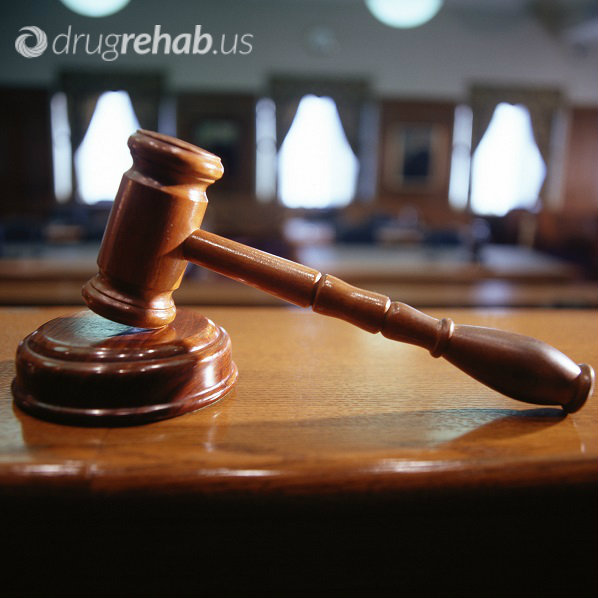 Marijuana remains illegal for recreational use according to the federal government, but states are asserting their rights and putting the legality of the drug to the vote.
Marijuana remains illegal for recreational use according to the federal government, but states are asserting their rights and putting the legality of the drug to the vote.
Those voters who have approved the legalization have a number of reasons for doing so and feel that they outweigh the obvious disadvantages of legalizing marijuana.
Some simply want to be able to use the drug without breaking the law.
Others see it as a good source of revenue for the state.
Many also see it as a way to reduce prison populations.
The Cons Of Recreational Marijuana Legalization
While the upside reasons to legalizing pot can sound pretty convincing, they completely ignore the obvious downsides. The overwhelming reasons to not allow legal marijuana are related to public health and the health of individuals. Marijuana is a mind-altering, addictive drug. Too many people forget this fact and falsely assume that marijuana is not that detrimental to health simply because it isn’t as bad as heroin, meth or cocaine.
Regular marijuana use leads to addiction in about 10 percent of those who partake. There are more people in rehab for marijuana addiction than for any other single drug. Even without addiction, marijuana use is detrimental to health. Smoking pot can cause lung conditions and memory loss. Using pot can also lead to accidents. Driving under the influence of marijuana is dangerous and there is no way yet to accurately determine when someone is too impaired to drive.
Of all the cons of legalizing marijuana, perhaps the most serious is the effect it could have on young people. Teens with developing brains stand to suffer the most from using this drug, and while laws will ban them from using it, everyone knows that legalizing the drug will only increase access for young people.
Currently, alcohol is the most commonly abused substance by teens because it is the easiest substance to get. With legalization, access to pot will only increase. Teens who smoke pot regularly risk causing permanent damage to their brains, including memory impairment and a lower IQ. Teens are also at a greater risk than adults of becoming addicted to marijuana.
Legalization of recreational pot is a reality that we must now face. With four states and D.C. voting for legalization and more states likely to follow suit, the negative consequences are likely to start appearing. If you have a teen in the home, be sure to have a talk about the dangers of using marijuana. Many people, especially teens, fail to recognize the risks taken when using marijuana.
How Many People Use Medical Marijuana? – Find Out The Truth Now!
16 Apr 2015
Yes, People Really Do Get High On Mothballs
It sounds ridiculous, but it’s true: there is such a thing as mothball abuse. It’s mostly abused by teens, which are at the right age for trying stupid things. As silly as it seems to be sniffing the fumes coming from mothballs, the risks and the dangers are real and serious.
Teens that engage in this behavior are at risk for some pretty worrying health problems. If you have a teenager at home and mothballs in the closet, bring up the issue and make sure the consequences of abusing this household product are serious.
The Mothball High
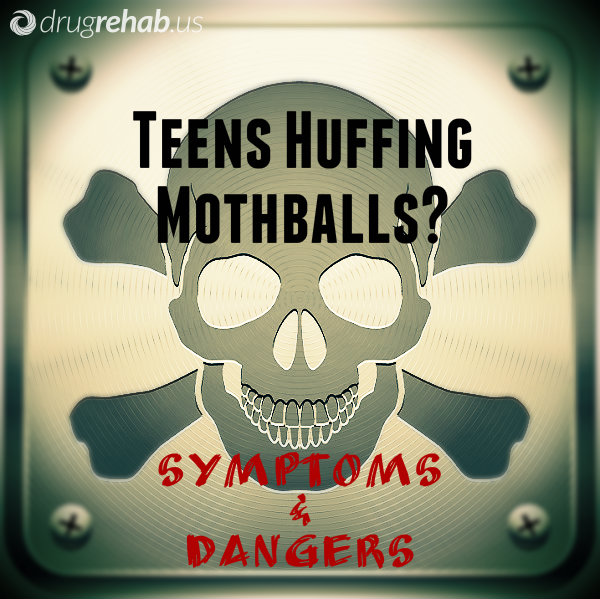 Teens are famous for coming up with new and inventive ways to get high. These strategies typically involve some household product because access is easy. Huffing is a common way for teens to get high, and most parents don’t even think about it. Huffing refers to the practice of inhaling fumes from a household product in order to get high. The list of inhalants used is long and includes paint, nail polish remover, hairspray, scented markers, correction fluid and even mothballs.
Teens are famous for coming up with new and inventive ways to get high. These strategies typically involve some household product because access is easy. Huffing is a common way for teens to get high, and most parents don’t even think about it. Huffing refers to the practice of inhaling fumes from a household product in order to get high. The list of inhalants used is long and includes paint, nail polish remover, hairspray, scented markers, correction fluid and even mothballs.
Mothballs are solid balls that give off an odor that deters moths. They protect your clothes from the insect. The odor comes from a substance in the mothball that turns from a solid into a gas that can be inhaled. Teens sniff mothballs like a drug to get high. The substance that gives them this high is either naphthalene or dichlorobenzene. Older mothballs tend to contain the former, while newer products have the latter. Both can get you high and are harmful to inhale.
Is Napthalene Addiction Dangerous For Health?
Huffing mothballs is dangerous. Most teens won’t do it often enough to get addicted, but addiction is possible. What is more likely is that teens inhaling the fumes will experience health problems.
Symptoms Of Inhaling Mothballs
The most common and immediate symptoms of inhaling mothballs include the following:
- lightheadedness and dizziness
- nausea
- vomiting
- stomach pains
- headaches
- eye and airway irritation
- slurred speech
- loss of coordination
- mental impairment
- weakness in the limbs
- scaly skin rash
Long-term Consequences Of Mothball Abuse
There are also some very serious long-term consequences of mothball abuse. Teens who huff mothballs several times put themselves at risk for excessive:
- weight loss
- anemia
- liver failure
- kidney failure
- and even seizures and coma
The effects of abusing mothballs with naphthalene are similar to those with dichlorobenzene. Dichlorobenzene is less toxic than naphthalene, which is why newer mothballs are made with it, but it can still cause the same symptoms and the same lasting damage to the body.
Talk To Your Teen About Mothball Huffing…NOW!
Mothballs made the news several years ago when teenagers in France were hospitalized for huffing them. The twin sisters were seriously impacted by their drug habit and one of the two needed a full six months to recover.
While cases like these bring exposure to a dangerous practice like mothball huffing, the story disappears before long and people forget.
Be aware that your teen might experiment with mothballs. Talk to your teen about the dangers and help him understand the risk of engaging in this serious type of drug abuse.
02 Apr 2015
Why Recreational Marijuana Should Stay Illegal
Should marijuana be legalized for recreational use? This is a question on the minds of many people these days. Voters have gone to the polls and, in a few states, are telling their governments that they want legal pot. Attitudes toward this mind-altering substance are changing and many people don’t believe it is harmful enough to be illegal. This attitude is dangerous, though. Marijuana is a drug that changes brain chemistry, alters mood, causes side effects and leads to addiction in at least a tenth of users. There are too many reasons for keeping this drug illegal.
Main Reasons Why Recreational Marijuana Should Stay Illegal
Marijuana Is Bad For Health
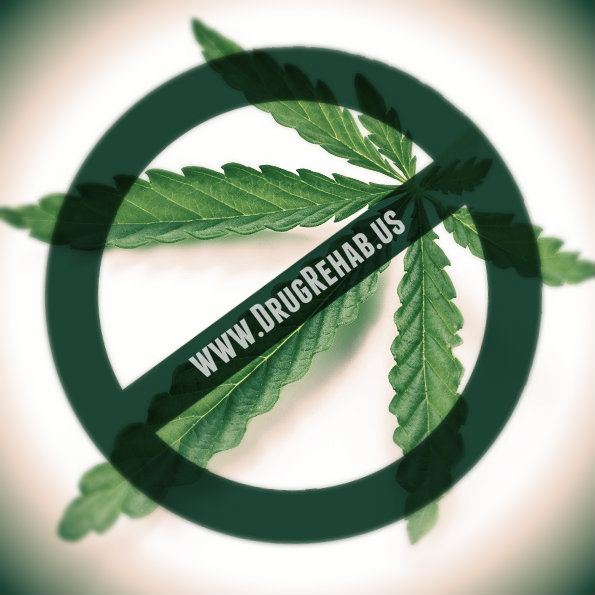 There is a lot of evidence that some of the compounds in the cannabis plant, which is where marijuana comes from, can help people with certain illnesses. But for healthy people, using marijuana causes a number of bad side effects and negative health consequences.
There is a lot of evidence that some of the compounds in the cannabis plant, which is where marijuana comes from, can help people with certain illnesses. But for healthy people, using marijuana causes a number of bad side effects and negative health consequences.
Short term marijuana effects include:
Sleepiness and depression, an increased heart rate (which can cause a heart attack, anxiety and panic), and delayed reaction times.
Long term marijuana effects include:
Over the long-term the drug suppresses the immune system, causes growth disorders, lack of motivation and lung damage, changes mood and personality and lowers libido.
Marijuana Is Addictive
One of the greatest misconceptions about this drug, and an important argument against legalization of marijuana is addiction. While not nearly as addictive as drugs like heroin or crack, marijuana is habit-forming and causes addiction in one out of nine users. Many people seeking professional treatment for addiction are hooked on marijuana. The problem is particularly real for young people. Addiction to marijuana is most likely to develop in users who started smoking as teenagers.
Marijuana Causes Accidents
Most people who use marijuana like the relaxing sensation that it imparts. The drug makes you feel drowsy, happy, relaxed and comfortable. The downside to these effects is the risk of having accidents. Marijuana messes with your coordination, reaction times and inhibitions. While high on pot, people make bad choices and have accidents that could have been prevented. If marijuana is legal, innocent people will become the victims of these accidents. Drinking and driving accidents already kill many people every day. Driving while high on pot will only add to the problem.
Marijuana Harms Young People
Teens and young adults are especially vulnerable to the negative effects of marijuana. They are more likely to become addicted to it. They are also at a greater risk of lasting mental damage from marijuana. Brains of teenagers are still developing, and using mind-altering substances can hamper that development. Teens using marijuana regularly experience lasting cognitive defects and memory deficits.
The pros and cons of recreational cannabis will continue to be debated in the public and voters will keep going to the polls to decide pot’s legal status. As the discussion carries on, we all need to remember the harm that marijuana causes and the lasting damage many users experience.
Read More What’s The Impact Of Recreational Marijuana Becoming Legal In Colorado?
Every recovering alcoholic or addict knows that each day of sobriety is a reprieve from active addiction. Active addiction is a chronic illness that may ultimately kill you. If you are an addict, you know that to drink or drug is to die.
Living life sober can be full of many challenges that can sometimes threaten sobriety. When faced with a diagnosis of terminal illness, the battle to stay clean and sober, no matter what, intensifies.
Personal Story Of John Eggers’ Terminal Illness Positively Redefining His Life
John Eggers, a 48-year-old attorney from Irvine, CA was diagnosed with glioblastoma, an aggressive form of brain cancer. There is no cure for his cancer, and the prognosis is poor. Without treatment, he would have approximately three months to live. With treatment, doctors predict his remaining life expectancy is 12 to 15 months. Experts say that less than 10 percent of glioblastoma patients survive five years after diagnosis.
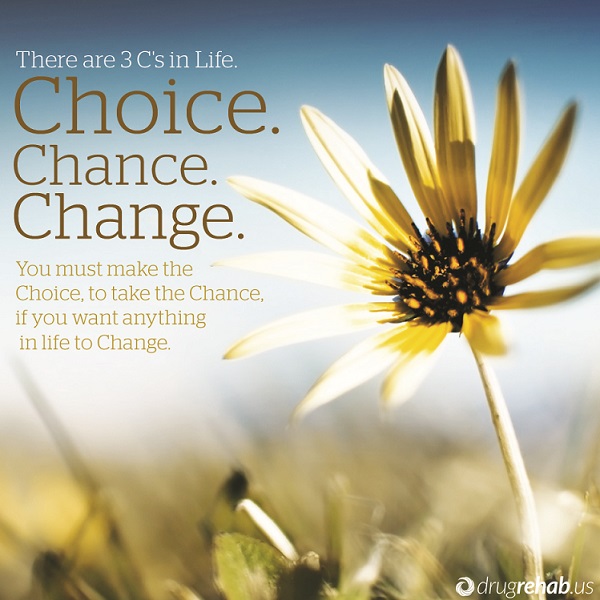 His symptoms came on suddenly one day after a trip to the gym. He lost feeling in his limbs and couldn’t speak. He suffered a seizure. A brain tumor was discovered, and he learned that he had a terminal form of cancer.
His symptoms came on suddenly one day after a trip to the gym. He lost feeling in his limbs and couldn’t speak. He suffered a seizure. A brain tumor was discovered, and he learned that he had a terminal form of cancer.
Eggers has been video blogging his final months of life for KTLA while he shares his experiences and checks things off his bucket list. Some of the items he has already been able to do include meeting Vice President Joe Biden, traveling to Europe and skydiving. He has also appeared on a TV show and met his favorite band, Depeche Mode. Living with terminal illness, Eggers is redefining his life.
Eggers admits that before his illness, he led a life driven by self-centeredness and not much regard for others. Faced with his own death, that has all changed. John has raised funds for families of others with cancer, and he has worked pro bono to help families of sick children stand up to insurance companies.
Trying To Escape Reality Through Opiate Addiction
Recently he was given opiates for pain but began abusing them to cope with depression and anxiety. Not many people would blame a dying man for wanting to escape from reality. But if you’re in recovery, you know that abusing drugs doesn’t make problems go away. It only postpones them or creates new ones.
In a recent video blog, he stated, “My name is John Eggers and I am a drug addict.” John decided to check into a treatment facility to beat his addiction, because he knew the drugs could kill him before the cancer did. As he pursues a life free of drugs, John hopes to be a powerful example to other addicts who are battling cancer.
And he wants to die drug-free.
Choosing Sobriety No Matter What
Eggers describes his addiction as “a very dark place,” a place beyond the comprehension of most people. He says the fact that his lifespan is short is acceptable to him, but that what isn’t acceptable is wasting any more of the time he has left on opiates or other drugs.
Newly out of treatment, Eggers continues to document his journey and his struggles. One side of his face is paralyzed since brain surgery, and at times he has difficulty choosing words as he speaks. But his desire to be clean and sober is unwavering.
The natural reaction for a drug addict or alcoholic when faced with extreme stress is to turn to chemicals, and there isn’t much greater stress than being faced with your own death. If you’re an addict, turning to mind-altering substances is not bad behavior. It’s doing what comes naturally. But it’s possible to recover from addiction to drugs, and John is making that choice today. Choosing recovery is making a conscious choice to go against the natural urge to use and abuse drugs and alcohol. No matter what.
In the case of John Eggers, he is choosing sobriety in spite of a death sentence, and he is using his final days to carry the message of a drug-free life. He hopes to inspire others through his video blog. If he can stay sober while he is facing a great deal of pain and his own mortality while he journeys through the dying process, others can stay sober too—no matter what they are facing.
YOU CAN DO THIS!
OxyContin is the brand name of an extended-release painkilling medication that contains the opioid narcotic substance called oxycodone. In its original form, this medication was easy to tamper with and use as a source of opioid abuse. In response to this situation, the manufacturers of OxyContin reformulated the medication and made it considerably more tamper-resistant.
In a study published in June 2014 in the journal Drug and Alcohol Dependence, a team of U.S. researchers investigated whether the reformulation of OxyContin has had the desired effect of reducing the number of people who use the medication in a pattern of opioid abuse.
Oxycodone And OxyContin
Oxycodone is a generic opioid medication noted for its usefulness in the relief of various forms of serious or severe pain. Like all other opioid drugs and medications, it can trigger diagnosable problems with abuse or addiction when used in ways not sanctioned and monitored by a doctor. Some branded medications contain oxycodone in combination with other, less-powerful painkilling substances such as acetaminophen, aspirin or ibuprofen.
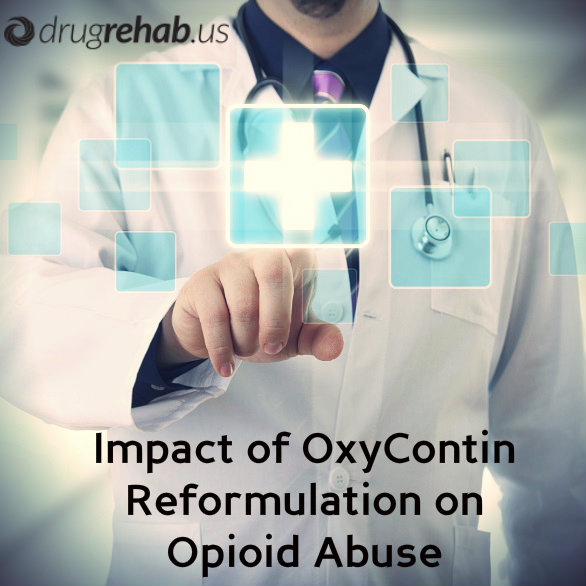 Common examples of these combined medications include Percocet, Endocet, Percodan, Combunox and Roxicet. Other branded medications contain only oxycodone as their active ingredient. In addition to OxyContin, examples of these medications include Oxecta and Roxicodone.
Common examples of these combined medications include Percocet, Endocet, Percodan, Combunox and Roxicet. Other branded medications contain only oxycodone as their active ingredient. In addition to OxyContin, examples of these medications include Oxecta and Roxicodone.
OxyContin arrived on the U.S. market in 1995. It is specifically designed to provide extended amounts of pain relief to people affected by ongoing moderate or severe pain. Since it must produce its effects for many hours, an OxyContin tablet contains more oxycodone than most other available medications.
Unfortunately, in its original form, the medication was highly susceptible to crushing, chewing, dissolving and other forms of manipulation that made its oxycodone content available all at once. This fact made OxyContin a prominent target for abuse by people seeking the recreational drug effects of opioid intake. Widespread availability of the medication also contributed to its prominent role in opioid abuse in the U.S.
OxyContin Medication Reformulation
Along with addiction specialists, public health officials and drug enforcement officials, the manufacturers of OxyContin (Purdue Pharma LP) became well aware of the role that abuse of the medication played in the larger phenomenon of prescription opioid abuse.
In response, they withdrew the original formulation of OxyContin from the market and, in August 2010, released a new version of the medication that is substantially harder to use as a source of abuse. Specific steps taken during this reformulation include minimizing the availability of oxycodone even after crushing or other manipulation occurs, as well as making it impossible to pass a dissolved form of the medication through a syringe for injection.
Impact Of OxyContin Reformulation On Opioid Abuse
In the study published in Drug and Alcohol Dependence, researchers from the University of Kentucky and Purdue Pharma used interviews with a group of 189 adults with a prior history of abusing OxyContin to assess the effectiveness of the new formulation of the medication in discouraging opioid abuse. During these interviews, each participant was asked to compare their monthly level of involvement in opioid abuse before the OxyContin reformulation to their monthly level of involvement after the reformulation.
After analyzing the results of the interviews, the researchers found that 33 percent of the participants had tried to abuse the reformulated version of OxyContin in the month before the study. This contrasted with a 74 percent rate of monthly OxyContin abuse prior to the reformulation, as well as with a 96 percent rate of monthly abuse for any form of immediate-release oxycodone.
Individual rates for snorting and injecting the reformulated medication were also substantially lower than the snorting and injection rates associated with both the old version of OxyContin and oxycodone products that release immediately into the bloodstream. Overall, the study participants tried to abuse the reformulated OxyContin on roughly two out of 30 days. In contrast, abuse of the original version of the medication took place approximately 13 days a month, while abuse of immediate-release oxycodone took place about 20 days a month.
The researchers note that abuse of the old version of OxyContin among the study participants became much less common after the new version of the medication reached the market. In addition, they note that the participants rarely shifted from oxycodone abuse to heroin use. All told, they concluded that, at least among the people who took part in the study, the new version of OxyContin does not play the same prominent role in opioid abuse as the original version of the medication first released in the 1990s.
Do You Or Someone You Know Need Help With Prescription Drug Addiction?
Call Us Now! Help is Available 24/7!
29 Dec 2014
How Many People Use Medical Marijuana?
Medical marijuana is the term commonly used to describe the plant-based drug marijuana when consumed as a treatment under the direction of a physician. Despite the known effectiveness of the drug in limited medical contexts, many researchers and public health experts express a legitimate concern that medical marijuana use may contribute to increased marijuana-related harm in the larger population.
In a study published in September 2014 in the journal Drug and Alcohol Review, researchers from the U.S.-based Public Health Institute sought to estimate how many people in California, a state with a widely-developed medical marijuana program, consume marijuana/cannabis in a medical context.
Medical Marijuana – THC And CBD
Marijuana contains two prominent active ingredients, THC (tetrahydrocannabinol) and CBD (cannabidiol). THC is largely responsible for the mind-altering effects closely associated with marijuana/cannabis use. CBD does not have any substantial mind-altering impact. Both THC and CBD have potential usefulness in a medical context.
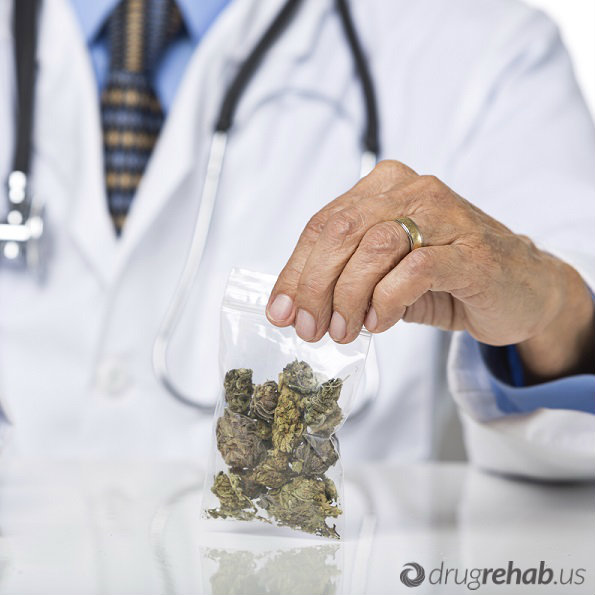 Scientifically supported medicinal properties of THC include nausea reduction and stimulation of appetite; other potential, less supported properties include the easing of inflammation and pain, as well as the reduction of muscle spasms.
Scientifically supported medicinal properties of THC include nausea reduction and stimulation of appetite; other potential, less supported properties include the easing of inflammation and pain, as well as the reduction of muscle spasms.
Scientifically supported medicinal properties of CBD include inflammation and pain relief, as well as seizure relief; the chemical may also help ease the severity of psychotic mental states.
Some medical marijuana growers sell products high in THC, while others sell low-THC products that rely on CBD for their effectiveness. However, without a thorough, case-by-case chemical analysis, no one can say how much of either chemical any given batch of marijuana/cannabis contains.
Among other things, this means that there is no such thing as “standard” dose of medical marijuana. For this and other reasons, the U.S. Food and Drug Administration does not recognize marijuana as a medical treatment.
In addition, federal law prohibits the sale or possession of marijuana and other forms of cannabis. Despite these facts, 22 U.S. states and the District of Columbia have laws in place that legalize marijuana/cannabis use as a treatment for certain ailments if a licensed physician issues a prescription.
Marijuana-Related Harm
Within or outside of a medical context, marijuana/cannabis use can lead to a number of significant health problems. For example, roughly 11 percent of all Americans who use the drug will eventually develop a diagnosable cannabis addiction. Addiction risks are especially elevated for people who use the drug habitually (as may be the case for medical marijuana consumers), as well as for people who begin their marijuana intake in adolescence.
Despite CBD’s potential to ease psychosis symptoms, heavy marijuana consumption is clearly linked to increased risks for experiencing psychotic episodes; in addition, regular consumers of the drug develop mental illness in general at a higher rate than the rest of the U.S. population.
Risks On Teen Marijuana Consumers
Apart from heightened risks for addiction, teen marijuana consumers have age-specific risks that include disrupted brain development, learning and memory impairment and an overall drop in intellectual skill. Physical ailments linked to marijuana use include lung infections, chronic bronchitis and heart disease.
How Many People Use Medical Marijuana?
California is one of the U.S. states that permits the sale of medical marijuana and the establishment of widely accessible dispensaries dedicated to medical marijuana distribution. In the study published in Drug and Alcohol Review, the Public Health Institute researchers used information gathered from the 2012 version of an ongoing project called the California Behavioral Risk Factor Surveillance System to estimate how many adult Californians report using marijuana in a medical context. A total of 7,525 randomly selected people took part in this phone-based project.
The researchers concluded that roughly 5 percent of California adults have used medical marijuana at least once. Demographically speaking, two groups of individuals are more likely to use marijuana in a medical context: young adults between the ages of 18 and 24 (also the group most likely to participate in recreational marijuana use) and adults with primarily European racial/ethnic ancestry.
However, medical marijuana use also occurs to some extent in every other demographic group, including men, women, people from various parts of the state, people with varying degrees of educational accomplishment and people from all other racial/ethnic backgrounds.
The study’s authors emphasize the fact that, although medical marijuana use is limited overall in California, people from all walks of life report using marijuana/cannabis in a medical context. The authors also emphasize the need to monitor the extent of marijuana-related harm in people who report using marijuana as a form of medicine. This is especially true since the availability of medical marijuana will likely increase in the future.
15 Dec 2014
Jail vs. Rehab For Addicts
Millions of drug addicts are jailed every year in the U.S. In many of these cases, they are sentenced to jail time because of minor crimes such as possession or a third strike. Rehab vs. jail is an old debate, but one that is shifting. While the old way has been to jail addicts because they have committed crimes, advocates for addicts are changing attitudes. Jail is not a valid form of rehab and it should stop being used as such. Addicts do not come out of jail cured simply because access to drugs was restricted or cut off; it’s time to start getting addicts the help they truly need.
Can Jail Be Rehab?
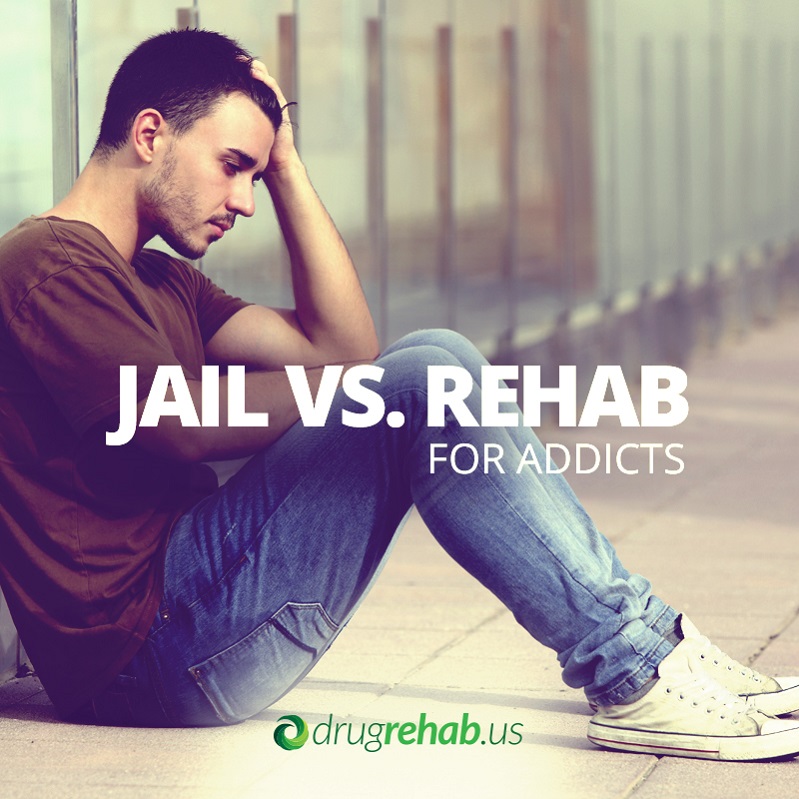 Philosophies of addiction treatment have long been punitive. Even with addicts who are not in trouble with the law, mainstream addiction care has often used punishment and tough love as a way to treat patients. This idea comes from a deep-seated belief that addiction is a moral failure and a personal weakness; that addicts have done something wrong because of an internal flaw and punishment is the way to correct it. This attitude is old and it is changing, but it still largely prevalent.
Philosophies of addiction treatment have long been punitive. Even with addicts who are not in trouble with the law, mainstream addiction care has often used punishment and tough love as a way to treat patients. This idea comes from a deep-seated belief that addiction is a moral failure and a personal weakness; that addicts have done something wrong because of an internal flaw and punishment is the way to correct it. This attitude is old and it is changing, but it still largely prevalent.
Because of this dated attitude, many addicts are sentenced to jail time instead of treatment in a rehab facility. Drug rehabilitation statistics refute this practice. Jail might work as effective rehab for a handful of addicts, but for most it simply doesn’t help. When a drug addict leaves prison, he is likely to start using again. Unless a jail or prison has a dedicated drug addiction treatment program, addicts will not be well served by spending time there.
Addicts Need Effective Treatment
No one would suggest that there should be no consequences for drug crimes, but jail time is not the most effective way to punish and rehabilitate addicts. Those convicted of minor and non-violent crimes could be sentenced to time spent in a treatment facility instead of prison. This would allow addicts to get the help they desperately need and would help them transform back to productive members of society who will be unlikely to break laws again.
One of the pros of recreational marijuana legalization that has recently been seen in Colorado and Washington is fewer drug users going to jail for minor crimes. There are a lot of real downsides to legalizing this drug, including possibly increased addiction rates, but if it means clearing prisons of non-violent drug offenders, it would be one positive outcome.
The debate over rehab vs. jail is one that should be officially closed. We know that prison time does not treat addicts and that no one is served well by jails overcrowded with minor offenders. Everyone would benefit, taxpayers and drug addicts alike, if we could send non-violent drug offenders to facilities for effective treatment.
Find Out For Yourself Or A Loved-One Which Therapy Will Work Best In – What Kind Of Addiction Therapy Do You Need? – And Break Free From Addiction Today!
Black Wednesday is the night before Thanksgiving and it is also known as the biggest bar night of the year. More than any other day during the winter holidays, this is the night during which many people cut loose and binge drink. The night before Thanksgiving is a night for the young, and it is young people who are most at risk for the consequences of overindulgence.
College students and 20-somethings are coming home for Thanksgiving, and while Thursday is for family, they use Wednesday night as a sort of reunion. Old friends get together to pack the bars and celebrate. If you are planning in taking part in a Black Wednesday event, plan ahead with a strategy of moderate drinking. Going overboard and binge drinking puts you at risk for a number of dangers, including injuries, alcohol poisoning, sexually transmitted diseases and assault.
Tips To Enjoy Black Wednesday Responsibly
Here are some ideas and tips to help you be responsible and to enjoy the night with friends:
 Skip the pre-party/pre-gaming – If you are over 35 and reading this, you may be confused. What’s a pre-party? Yes, young people actually take time to drink before a drinking event. The pre-party is a small gathering, usually at one person’s home, to get lightly buzzed before the main event. This is irresponsible drinking at its worst. Don’t do it. By all means get together with a few close friends ahead of bar time, but have coffee, soda, or mocktails instead of alcohol.
Skip the pre-party/pre-gaming – If you are over 35 and reading this, you may be confused. What’s a pre-party? Yes, young people actually take time to drink before a drinking event. The pre-party is a small gathering, usually at one person’s home, to get lightly buzzed before the main event. This is irresponsible drinking at its worst. Don’t do it. By all means get together with a few close friends ahead of bar time, but have coffee, soda, or mocktails instead of alcohol.
- Eat – Of course you want to look your best for a reunion with old friends, but starving yourself ahead of time is not the way to do it. You need to have food in your stomach or one drink could wipe you out for the night.
- Have a way to get home – To be safe, make sure you know well in advance how you’ll get home. Select a designated driver or plan to take a cab or public transportation home. If you’re going with the latter, make sure you have a friend to come home with you so that you’re not traveling alone.
- Set a limit – Set a limit for how many drinks you will have at the bar or party and be firm about it. A specific goal is important because if you go into the event with the vague goal of not getting too drunk, it will be too easy to go past the point of no return.
- Share your limit – Tell a trusted friend who will be heading out with you that you have a limit and that you want her to help keep you accountable. If your goal is a secret, it’s easy to stretch it further. A friend will help keep you in check. Offer to do the same for her.
- Alternate alcohol with non-alcohol – Whatever your set limit is, have a non-alcoholic drink in between each alcoholic one. This will force you to slow down and prevent you from getting too drunk. Once you have reached your limit, keep a non-alcoholic drink in your hand for the rest of the night. It will help you resist the urge to get another drink.
Always Plan Your Night Of Drinking In Advance
Drinking the night before Thanksgiving can be a fun way to celebrate and catch up with old friends, but it can easily get out of control. If you have a plan set in advance and follow these tips, you can enjoy the night, be safe and have no regrets the next morning.
Planning Ahead Of Time Can Save Your Night…And You Or Your Friend’s Life


